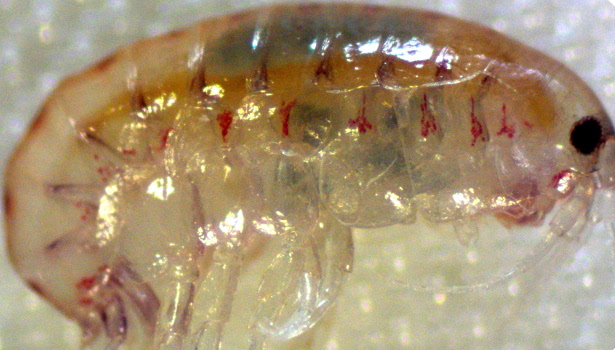In this post, Jochen Zubrod reports on their recently published paper “Is Hyalella azteca a suitable model leaf-shredding benthic crustacean for testing the toxicity of sediment-associated metals in Europe?”.
Sediment-associated metals can become biologically available and may thus affect important ecosystem functions such as leaf litter breakdown, a process in which invertebrate detritivores, so-called shredders, play a crucial role. Inter alia due to its important functional role, the crustacean shredder Hyalella azteca (see photo) is used to assess environmental risks associated with (metal-)contaminated sediments and to propose sediment quality standards. H. azteca also serves this purpose in Europe although it is indigenous to Northern and Central America and, hitherto, it is unknown if the sensitivity towards sediment-associated metals is comparable for H. azteca and European crustacean shredders.

We hence compared the sensitivity of H. azteca with that of the European species Asellus aquaticus and Gammarus fossarum towards sediment-associated copper and cadmium. Six (2 metals x 3 species) independent laboratory experiments were performed. During the 7-day assays, mortality and the consumption of leaf discs serving as food were quantified.
H. azteca reacted approximately fourfold more sensitive than the most tolerant tested species towards cadmium. For copper, in contrast, its sensitivity was 1.6 times lower than the highest sensitivity determined, which should be covered by safety factors conventionally applied during risk assessments. Therefore, our results in combination with the existence of standardized testing protocols, their ease of culture, and short generation time, suggest H. azteca as suitable crustacean model shredder for assessing the toxicity of sediment-associated metals in Europe.
The paper was authored by Jochen Zubrod, Dominic Englert, Alexander Feckler, Ricki Rosenfeldt, Hendrik Pasternack, Henner Hollert, Thomas‑Benjamin Seiler, Ralf Schulz, and Mirco Bundschuh, and published in Bulletin of Environmental Contamination and Toxicology.
